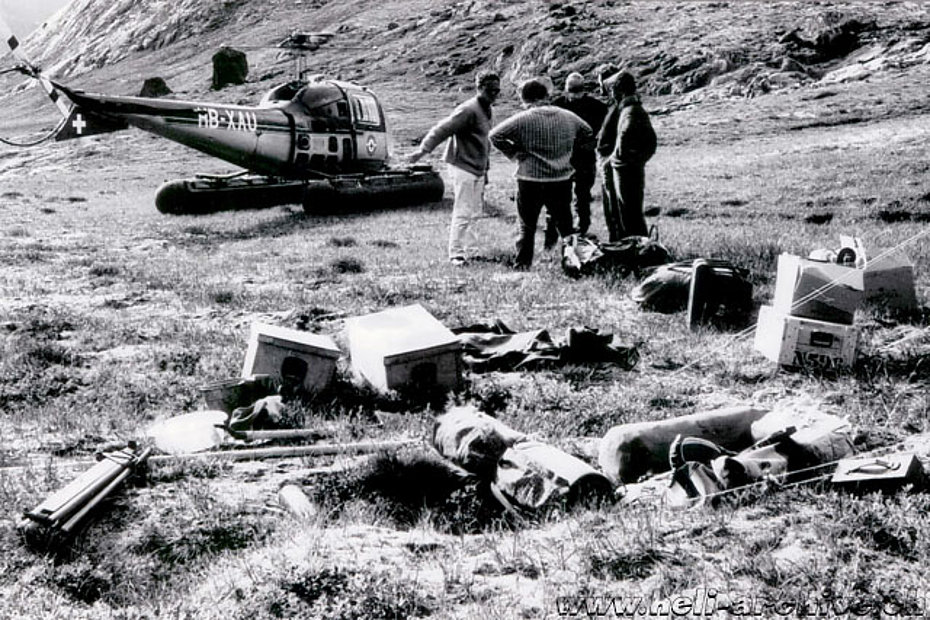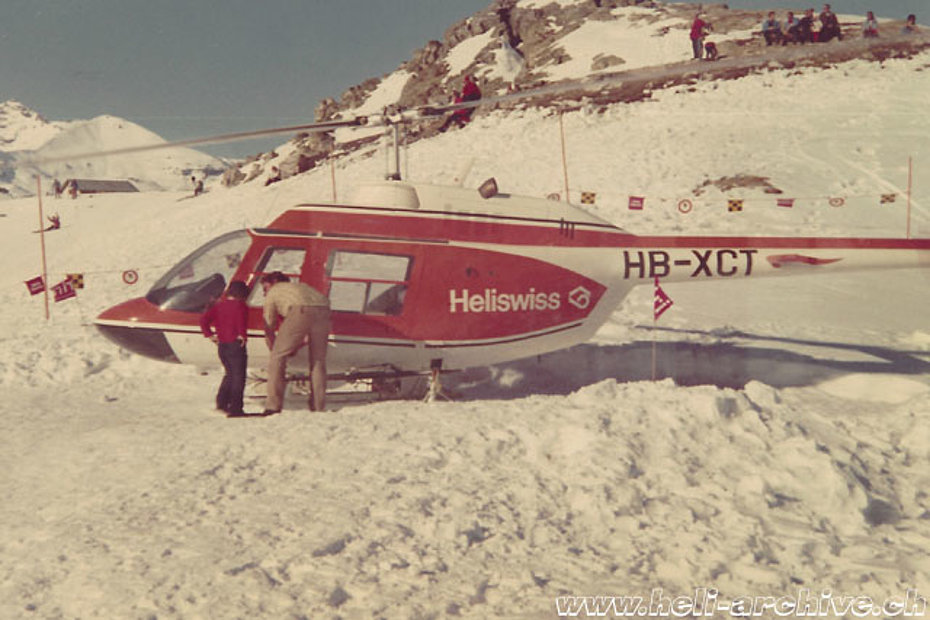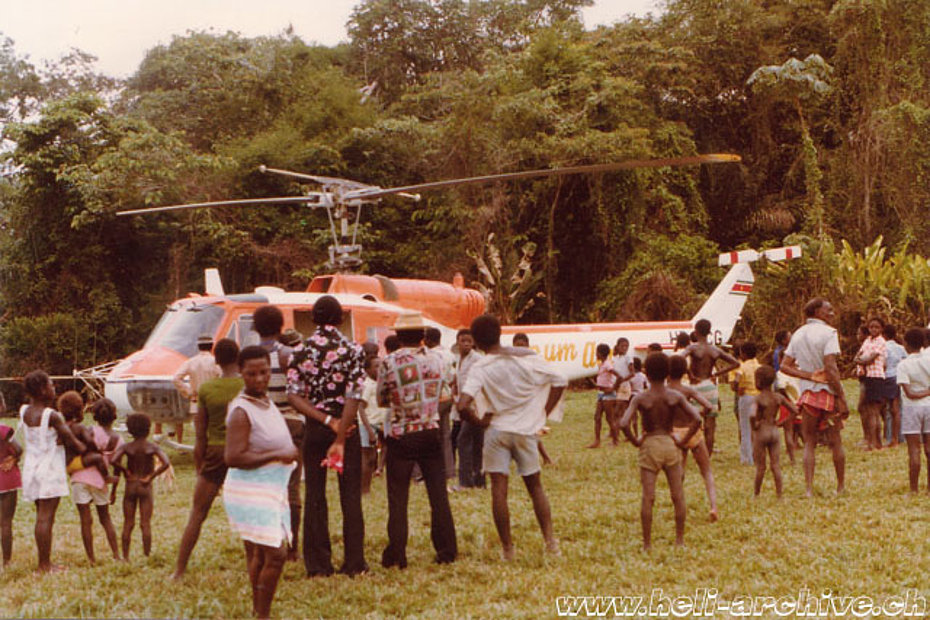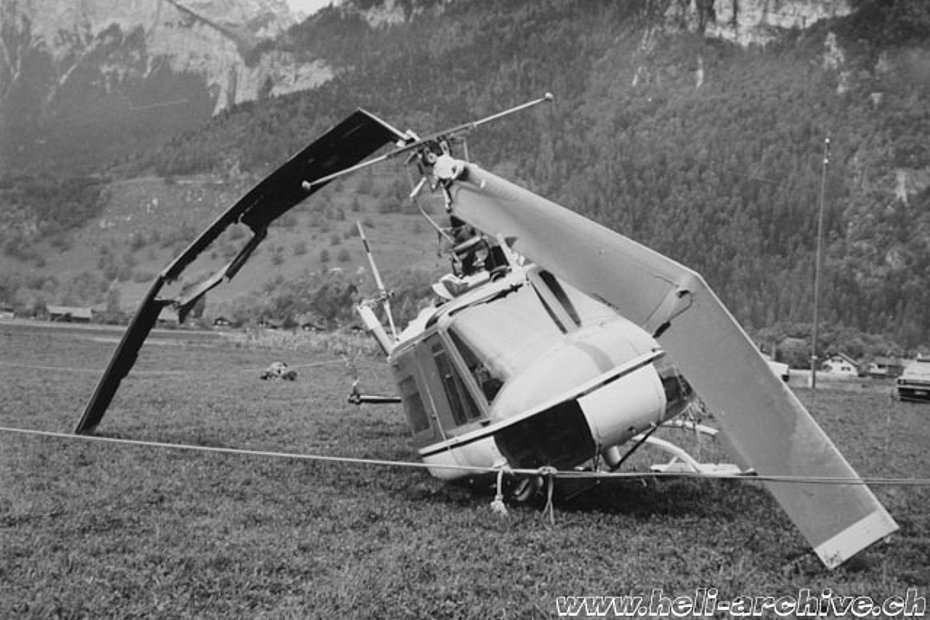
Jean-Pierre Füllemann was born in Freiburg on March 2, 1937. After the primary and secondary schools, from 1952 to 1956 he followed an apprenticeship as a mechanic. From December 1956 until January 1960 he worked on various ships as a repair mechanic and machine assistant. From June 1960 until April 1961 he attended a course at the Marine Engineering College in Southampton (England) obtaining the certificate as engine room officer on large ships.
Back from a sailing trip in the summer of 1963, he decided to stay in Rolle/VD where his girlfriend (who later became his wife) lived and where he found a temporary job on behalf of his precedent employer. The latter proposed him to become his business partner, but Jean-Pierre had other projects in his mind: he wanted in fact to become a helicopter pilot and his girlfriend too persuaded him to pursue his dream.
The beginning of the aviator career
Jean-Pierre contacted the Federal Office of Civil Aviation (FOCA) to obtain information about the path to obtain a helicopter license. So he learned that in order to obtain a financial sustain he had first to obtain a private airplane pilot license and thus immediately enrolled in a pilot course.
On September 6, 1963, FOCA issued him a license as a student pilot and shortly after he started the pilot course with Alpar in Belp/BE using a Piper L-4.
On November 19, 1963, FOCA granted him a private airplane pilot license. The first important step towards the crowning of his dream had been accomplished.




Helicopter pilot
On November 28, 1963 Jean-Pierre Füllemann began the helicopter training course in Belp with flight instructor Alfred Glauser.
On January 1, 1964 he was employed by Heliswiss and whenever possible he made transfer or private flights in order to log the flight hours required to obtain the commercial license.
On December 21, 1964, while he was working in Samedan/GR, and with a total flight experience of 109 hours under his belt he obtained the commercial helicopter pilot license no. 83. During this period he was also trained to carry out the first transportation of building material and goods.
Later, on March 9, 1965, FOCA granted him the permission to make mountain landings.
The training program
At that time, commercial pilots received their professional training as follows: the program was divided into four stages each comprising 25 hours of dual control flights: the first stage (Step A) allowed the candidate to obtain a private pilot license.
The next step (Step B) allowed the candidate to obtain the commercial pilot license, while the further step (C) introduced the pilot to landings in pre-Alpine regions up to an altitude of 1,500 meters. In the last stage (Step D) the pilot learned how to land and execute commercial transports at high altitude in the Alps. Jean-Pierre did his mountain training in Samedan/GR.
At the end of the training program, with a total flight experience of about 100 hours, the pilot was considered (at least from a theoretical point of view) operative. The basic training was done on the (Agusta-)Bell 47G or G2 (Steps A and B), and then on the (Agusta-)Bell 47G3B-1 (Steps C and D). This latter version of the famous helicopter had a turbo-charged Lycoming TVO 435B-1A engine, and was therefore more suited for the alpine flights.
However, practical experience highlighted that the training was not sufficient and several inexperienced pilots were involved in accidents, but fortunately not him.
It is interesting to underline that at that time the high training costs for professional helicopter pilots were mostly financed by FOCA and the Swiss Air Rescue Guard (SARG, nowadays Rega). The pilots paid only 5% of the training costs but were required to sign a 5-years employment contract with one of the (few) Swiss helicopter operators then existing. Pilots had also to be available to the SARG for search and rescue missions. At that time in fact this organization had only one helicopter, and therefore it was necessary to employ personnel and aircraft belonging to other operators.
Jean-Pierre Füllemann, along with Fernand Cardinaux, Markus Burkhard and Ulrich Bärfuss, was among the first to receive this financial support.
From January 1, 1965 on he started his aviation career as a full time professional helicopter pilot on behalf of Heliswiss. At the beginning he received simple assignments followed by more challenging missions.
The following year he was commissioned to travel to Calabria/Italy where he flew on behalf of the Italian company Aer Agricola spraying olive trees. On this regard on June 2, 1966, he completed the training course on the Hughes 269A.
Missions abroad
Because of the shortage of aerial work in Switzerland in the 1960s and 1970s, Heliswiss, thanks to the excellent reputation gained, signed several contracts for the engagement of its helicopters abroad.
For this reason Jean-Pierre Füllemann was often forced to pack his bags. When possible, his wife and his son Pierre, born in 1967, accompanied him.
In 1967, thanks to the experience logged, he was sent to Crete/Grece to spray olive plantations with a Bell 47G2.
On May 9, 1967 he obtained the qualification to fly the Bell 47J Ranger. Shortly after he left Switzerland and went three months in Greenland where he was charged to transport a group of geologists employed by Grønlands Geologiske Undersøgelse (GGU) along with their equipment.



In summer 1968 he flew again in Greenland.
On March 7, 1969 he obtained the qualification to fly the Agusta-Bell 204B. On this helicopter he logged more than 2,200 hours of flight carrying building materials. That year for example he was charged to transport the building materials for the construction of a ski resort in Tignes/Savoie (France).
On July 26, he completed the transition course on the Bell 206 Jet Ranger. Despite the limited performances of the Allison 250 C-18 turboshaft, this helicopter was intensively used by Heliswiss during the 1970s for the transportation of underslung loads.
In 1971-1972 he went to Mauritania (Africa) where he flew a Bell 206 Jet Ranger used to locate fishponds and based on the vessel “Interpeche”.

The opening of the Domat-Ems base
In 1973, Heliswiss decided to open a new helicopter base in Domat-Ems/GR, and Jean-Pierre Füllemann was designated as base chief.
From this heliport he carried out countless transportations of goods, building material and passengers. SAR missions on behalf of GASS were also routine activities.
On February 6, 1974, he completed the transition course on the Helitech-Sikorsky S-55T HB-XDS occasionally employed by Heliswiss.




Two incidents in a few weeks
After returning to Switzerland, in a short period he was victim of two aviation accidents.
On September 7, 1976, he took-off from Domat-Ems at the controls of the S-55T HB-XDS directed to Udine (Italy) to help the victims of the earthquake. Over the mountain village of Davos he was surprised by a sudden loss of control attributable to a failure of the hydraulic system or a sudden turbulence during which the maximum rotor rpm were exceeded. Although frightened he was able to land without further incidents.
A few weeks later, on October 26, during a series of transportation flights in Domat-Ems, shortly after the take-off he was surprised by a sudden explosion followed by a complete loss of power.
The Agusta-Bell 204B HB-XCQ made a forced landing but luckily no one was injured. The investigation report indicates that the accident was caused by the rupture of a compressor blade.

The premature end of the aviation career
After about 15 years of flying activity as a commercial helicopter pilot on behalf of Heliswiss and a flight experience of 5,500 hours under his belt, in 1978 Jean-Pierre was forced to prematurely cease his aviation career activity for medical reasons and leave Heliswiss.
Based on the information gathered, his visual capacity was gradually reduced after an antimalarial prophylaxis.
It was a very hard time for him seen his deep interest in the helicopters world. Flying was in life!
He decided to leave Switzerland and moved to Argentina where he was employed as a technical manager in a company active in the revision and maintenance of marine engines.
Under certain aspects it was a return to the origins, seen that in his youth he had already embarked several times.
In 1986 he become the first foreigner to obtain the certificate of chief engineer at the maritime academy of Buenos Aires. At that time he worked as engine room officer on the Swiss ship MS Maloja in service with Schweizer Reederei AG.
After his definitive return to Switzerland, between 1989 and 2001, he worked as technical manager at the Migros storehouse in Bischofszell.
Unfortunately, Jean-Pierre Füllemann passed away in March 2001 following a long illness, but he is still remembered with great affection by the Swiss rotary-wing community as a true pioneer as well as an excellent helicopters pilot.
HAB 06/2017

